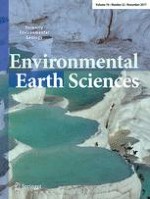01.11.2017 | Original Article
An experimental study on controlling post-earthquake debris flows using slit dams
Erschienen in: Environmental Earth Sciences | Ausgabe 22/2017
EinloggenAktivieren Sie unsere intelligente Suche, um passende Fachinhalte oder Patente zu finden.
Wählen Sie Textabschnitte aus um mit Künstlicher Intelligenz passenden Patente zu finden. powered by
Markieren Sie Textabschnitte, um KI-gestützt weitere passende Inhalte zu finden. powered by
